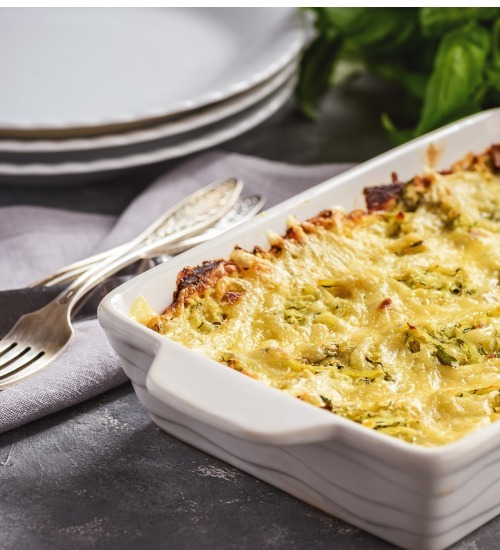What Adam Smith Ate – Potatoes
July 5, 2022


Someone recently sent me a YouTube video where a historian describes how potatoes were illegal in Early Modern France. According to Tasting History with Max Miller, the French considered potatoes poisonous throughout the first half of the 18th century and banned them outright banned in 1748. They wouldn’t embrace them until the 1770s.
Meanwhile, the Irish had been cultivating potatoes for decades and, in Scotland, Adam Smith was extolling the virtue of the fine tuber. In An Inquiry into the Nature and Causes of the Wealth of Nations (WN), Smith uses corn, rice, oats and other staples to discuss productivity, pricing, rents, profits, and even subsidies. Along the way, he examples give us a glimpse into how the world in the 1700s ate.
Corn was popular in Europe because it would feed both people and cattle. Rice grew well but required significant amounts of water for strong yields. Wheat was a standard grain crop in England as were oats in Scotland. And while turnips could be grown in mounds on unused acreage, Smith thought more people should be thinking about the humble potato.
Smith argues that the same acreage planted in wheat could be planted in potatoes more cheaply and feed the laborers with lots left over. As he writes
…the labourers being generally fed with potatoes, a greater surplus would remain … [after] maintaining all of the labour employed in cultivation. A greater share of this surplus, too, would belong to the landlord. Population would increase, and rents would rise much beyond what they are at present.”
In addition, he simply thought it better for nourishing the population than wheat or oats. In Scotland, many people considered a good bowl of oatmeal “a heartier food for laboring people than wheaten bread. “ But Smith wasn’t necessarily convinced.
By 1772, even the French came around and legalized the vegetable. As Smith wrote in WN:
“The chairmen, porters, and coalheavers in London and those unfortunate women while live by prostitution, the strongest men and the most beautiful women perhaps in the British dominions, are said to be, the greater part of them, from the lowest rank of people in Ireland, who are generally fed with [potatoes]. No food can afford a more decisive proof of its nourishing quality, or of its being peculiarly suitable to the health of the human constitution.”
It’s rather telling that there seem to be no recipes using potatoes in Elizabeth Cleland’s 1755 New and Easy Method of Cookery. (By 1794, one French cookbook contained recipes only using potatoes.) Despite Smith’s high hopes, Scottish cuisine hasn’t embraced a large number of ways to eat potatoes mashed dishes with turnips (neeps and tatties) or roasted on the stove with lamb (stovies).
Sir FM Eden in his 1797 treatise State of the Poor notes that in the North of England, they were “sometimes roasted or boiled, and eaten with butter; … but are more commonly boiled (sometimes with the skin on, and sometimes with it taken off), chopped into small pieces, and eaten with butter (either cold or melted), or bacon fried.” Eden notes were in “constant standing at every meal, breakfast excepted, at the tables of the rich, as well as the Poor.”
Eden credits the potato with saving the Highlanders from famine calling the vegetable “the greatest blessing that modern times have bestowed on the county.” While potatoes are often considered part of many other dishes (like soups and stews), the Scottish classic Rumbledethump is made with mashed or “rumbled” potatoes. It’s a perfect way to use up leftover mashed potatoes as well a variety of other veggies. Topped with cheese and baked, it’s a perfect side dish.
Rumbledethump
· 3 cups mashed potatoes (leftover) or fork smashed boiled potatoes
· 2 cups mashed turnips or rutabaga
· 3 tbsp butter
· 1 cup finely sliced cabbage or kale. (You can also substitute fresh spinach, parsley, or onion, or even cooked broccoli.)
· 3 tbsp milk
· 1 ½ cups shredded cheddar cheese
· Salt and pepper
1. Preheat the oven to 350F. Spray a 9x9 baking dish with cooking spray.
2. Combine the mashed potatoes and mashed turnips in a large bowl. Season with salt and pepper.
3. Melt the butter in a large sauté pan over medium heat. Sauté the vegetables until tender and translucent. Season with salt and pepper.
4. Combine the sauteed vegetables with the mashed potato mixture. Season again and add the milk and mix until well combined.
5. Put the mixture into the baking dish. Top with the cheese. Bake 25-30 minutes until the top is crusty and browned.
Want to Read More?
What Adam Smith Ate: In Which We Discuss Oats
Where Turnips Turn Up in Adam Smith's World
Want to Read More?
What Adam Smith Ate: In Which We Discuss Oats
Where Turnips Turn Up in Adam Smith's World